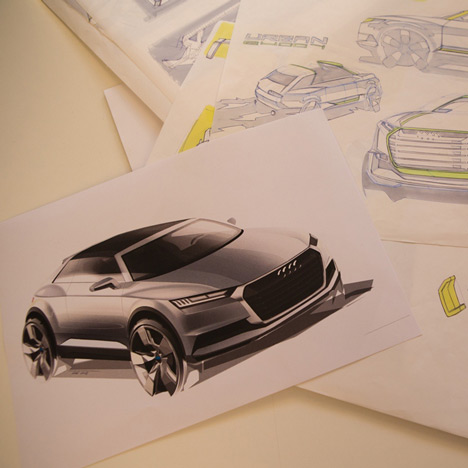
Audi announces new design strategy
News: German car brand Audi has announced a new design strategy, bringing the interior and exterior design studios together to encourage faster innovation and stimulate greater dialogue between the teams. "You can't survive if you just depend on one brain to do a complex thing like a car," said Audi head of exterior design Achim Badstübner.
Head of Audi Group design Wolfgang Egger has set up a satellite studio in Munich where the interior, exterior and colour & trim teams come together for workshops and to share ideas. Until now the teams, which together employ 200 people, have worked in separate buildings at the main Audi plant in Ingolstadt.
The Concept Design Studio has already produced a prototype vehicle, called the Crosslane Coupé which, the brand claims, shows greater design unity between interior and exterior.
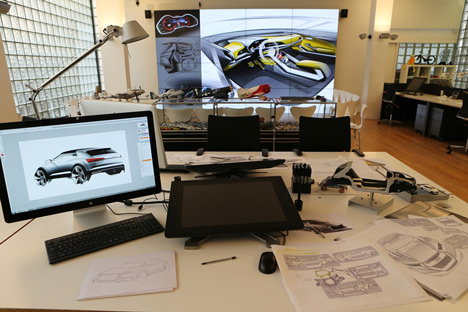
"We tend to make the mistake that we have an exterior department, an interior department and a technology department, and they all know what they're doing but the connection is not so good," Badstübner told Dezeen.
"I think it's very important to basically lock them in one room, literally speaking," he added. "Then there is an interaction: you talk to the guy who does seats and he tells you something about his expertise and you might take something from him that helps you to develop a new wheel, for example."
A new dedicated building to house all the design teams together is under construction at the Ingolstadt plant, but in the meantime designers will be brought together in workshops at the Munich studio and through exchanges between departments. "Right now there are four people from exterior design working downstairs in the interior studio and there are four people from Munich in the exterior studio," says Badstübner.
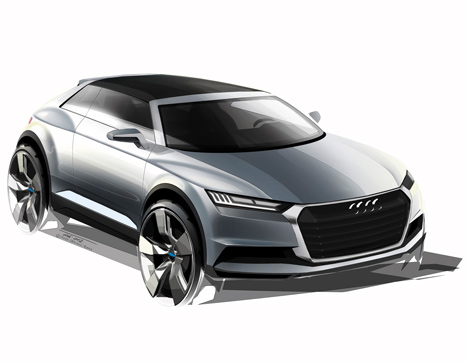
A key aim of the new arrangements is to break down the culture of individual authorship and encourage cooperation. Badstübner explains how fierce competition in car design schools and for jobs nurtures a tendency for designers to to keep their ideas close to their chests and resist collaboration.
"It's extremely competitive, especially in exterior; it stays like that your whole life," says Badstübner. "Interiors can work differently because it's impossible to do an interior as a one-man show: you have somebody doing the seats, somebody doing the steering wheel, somebody doing the dash, the next one doing the trunk, so it's a team of people. In exterior, most of the time you're talking about one sculpture and you get used to thinking 'I am the designer for the car.'"
This attitude can be detrimental, he adds, because when individuals work intensely on one aspect of the car they can lose sight of the bigger picture. "You have to be en expert and there is an advantage in digging deep, to really know every screw, every system and pattern for a specific thing, because you have all of the information at the point where you need it, but it is misguided in another way. If you dig too deep, it's a little bit like digging a hole: you're in the hole so you can't see the world around it."
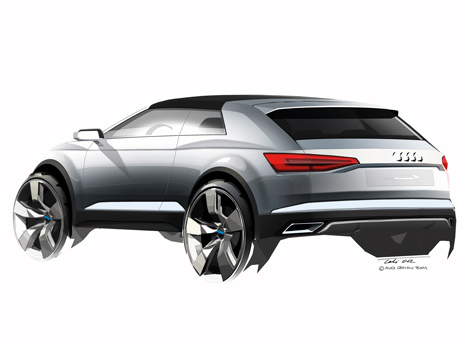
Egger asserts that “teams come up with the best ideas” and his Concept Design Studio aims to break down this culture of individual experts to create holistically designed vehicles. "You get a different result," Badstübner agrees, "because through this method you get the best of every brain. I think you can't survive if you just depend on one brain to do a complex thing like a car."
"This approach is pretty new. I'm not saying that other brands don't work with a team effort, but most of the time I think we're talking more about a team than really actually working with it. We've proven with these cars that we're working as a team and that everybody gets the benefit."
In addition to faster innovation, Audi hopes this more unified design strategy will give it the edge over competitors by lending a more distinctive identity to its products. “Only when design and technology mesh perfectly does an automobile make a statement for the Audi brand,” says Egger.
"We're using design as a tool of communication," says Badstübner. "You can either do commercial adverts somewhere, or you just have the product on the street. The message has to be strong and it has to be clear, so people understand it. With our show car it's very obvious that it has a robust look."

The defining feature of the resulting Crosslane Coupé concept car is its singe piece space-frame chassis, developed in collaboration with Audi's Lightweight Design Centre. This is visible both inside and outside the car: around the grille at the front and through narrow openings in the bonnet, and round the sills of the doors inside.
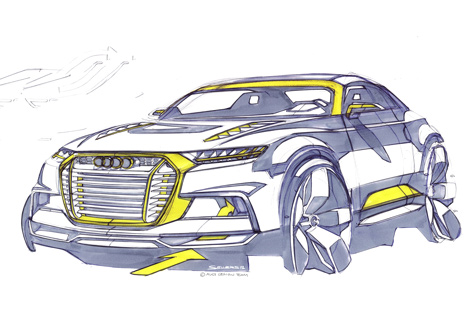
"We started from the single frame and really tried to bring that into the interior," says interior designer Ulrich Beierlein. Instrument covers and grilles take on the trapezoidal shape of the headlights and vents of the exterior, while large, low vents in the front bumper to cool the engine are repeated inside to cool passengers.
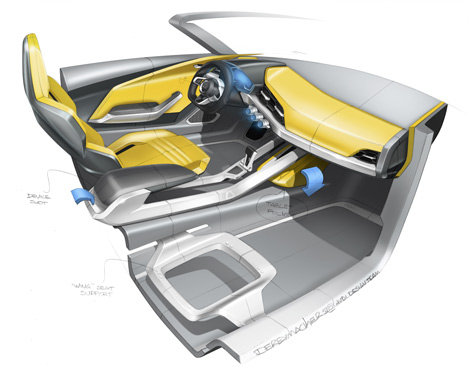
"In this car we really break some rules in Audi interiors," said Beierlein, explaining how the lines of the interior would normally wrap around the driver and passengers then across the front of the windscreen. In the Crosslane Coupé, however, these lines shoot forwards to align with exterior seams running down the bonnet. "
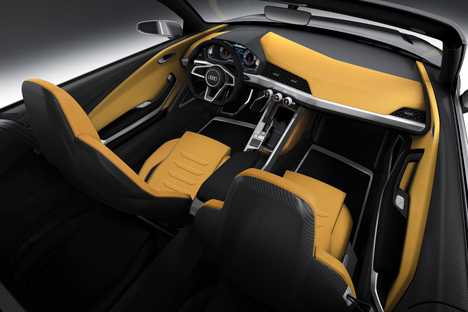
We call this the 'vector wrap' and it's to bring the dynamic of the exterior theme to the interior theme," explains Beierlein. “The cabin opens in the direction of travel and continues as an unbroken line in the engine hood,” adds Karl-Heinz Rothfuss, head of interior design.
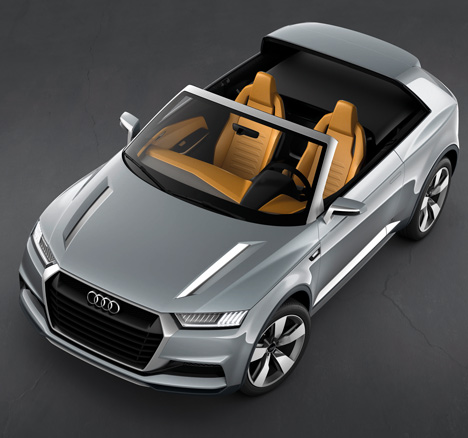
Earlier this year we reported on Apple bringing its hardware and software design teams closer together, putting Jonathan Ive in charge of both.
Meanwhile Audi's Lightweight Design Centre been collaborating with Clemens Weisshaar and Reed Kram to develop a chair using technology from the car-racing industry that was unveiled at Design Miami this month.
See more stories about car design »